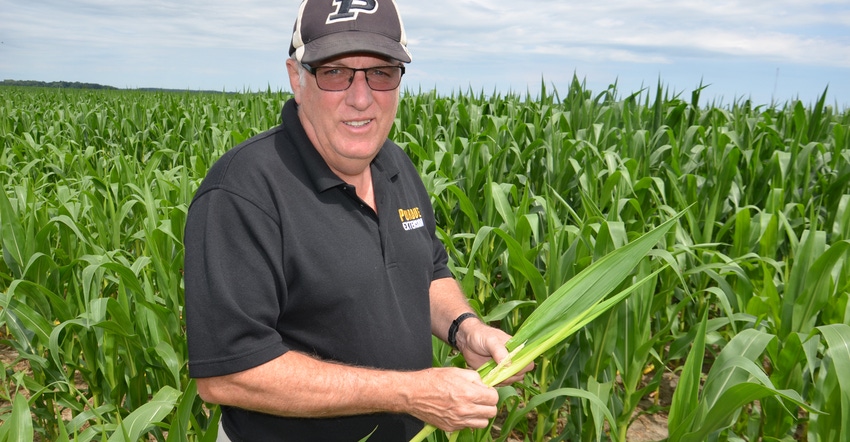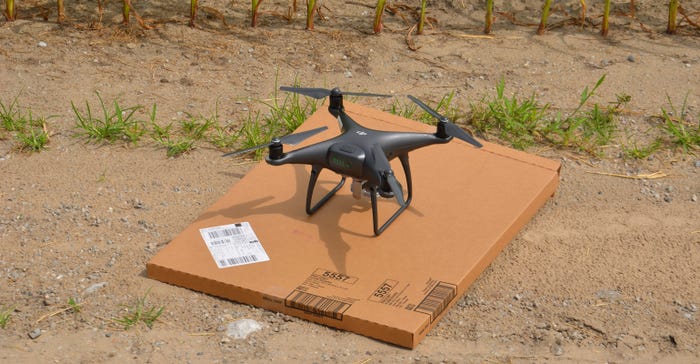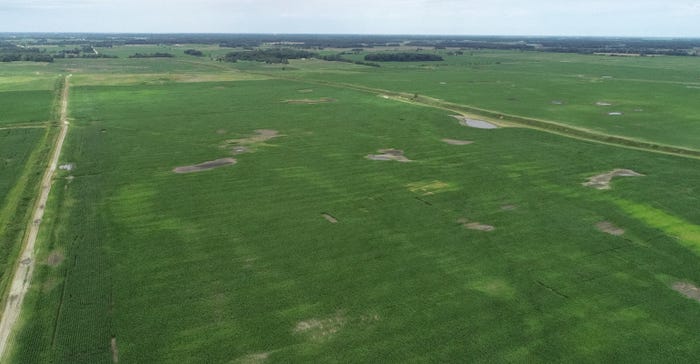
How effective is windshield scouting? Bryan Overstreet says it could be very misleading, especially this year. If there are low spots in a field where water could have ponded after planting, the field may look much different from the air than it does if you’re just driving by.
To prove his point, Overstreet, Jasper County Extension ag educator and an Indiana certified crop adviser, took a DJI Phantom 4 Pro UAV to a farmer’s cornfield, after gaining permission, and flew the field, capturing images from the air.
Good example
“This field was planted April 24, and it was 92-day corn, so it was way ahead of most corn in our area when I flew the field on July 1,” Overstreet says. The farmer planted an early hybrid in hopes of harvesting early so he could seed a mix of cover crops. Several species deliver better results if planted by mid-September most years, experts say.
Except for a couple of outside rows that didn’t get much nitrogen, the field looked uniform from the outside, Overstreet reports. “You would have expected it to be perhaps further along, but remember, much of May and June was cool,” he notes. “Tassels were there within the whorl, but they weren’t out yet when I flew the field.”

PREPARE FOR LIFTOFF: This DJI Phantom 4 Pro will soon send back live images, indicating what the field looks like from the air.

Overstreet is a member of Purdue University Extension’s Quad Squad, one of about a dozen and a half Extension educators scattered across the state who have spent the last year experimenting with how best to use UAVs to help farmers and other people within the community. He flew some 3,000 acres of crops during 2018 alone.
Overstreet was also recognized by the Indiana Certified Crop Advisers Association as CCA of the Year in December.
What flight reveals
Once the UAV was in the air, it began sending back images, which Overstreet could see live on a screen. He often programs a route for the UAV to fly before he drives to a field. In this case, he controlled the UAV manually, making sure he got images of all corners of the field. It reached maximum altitude allowed by the Federal Aviation Administration of 400 feet during the flight. A readout on the screen reports flying altitude and indicates when the UAV has reached its allowed maximum.
Although this UAV is adapted to use a program such as DroneDeploy to stitch an image during flight, Overstreet didn’t use it during this flight. When he uses that program, he sends flight data via the cloud to a service offered by DroneDeploy. Later the same day, he has a more enhanced image of the field. DroneDeploy is a subscription service that offers processing of images.
The company can use algorithms to prepare an image that simulates what a Normalized Difference Vegetation Index image would look like. NDVI cameras are much more expensive. The image DroneDeploy can produce in various colors can give a better indication of crop stress.

PROBLEM SPOTS: Now you can see what the camera mounted on the UAV saw of the same field from the air. There are spots where the corn is not as productive.

“What we saw in this field just using a regular camera was that there were several spots within the field where corn was shorter or missing, likely because it drowned out during heavy rains sometime after planting,” Overstreet says. “The ideal thing would be to go back and walk to the spots which don’t appear to be doing as well to verify the cause.”
That’s possible to do by using GPS, he adds. Overstreet expects more farmers will want to use UAV technology in the future. “In this field this year, you get a very different impression — and likely a more realistic yield expectation — looking from the air versus looking from the outside,” he concludes.
About the Author(s)
You May Also Like




